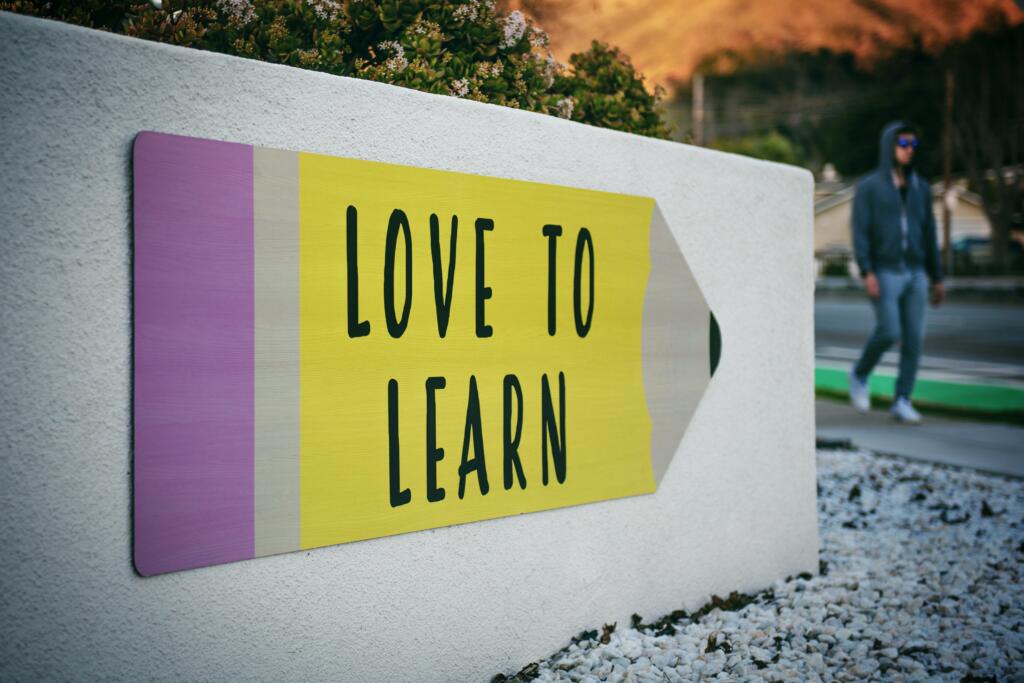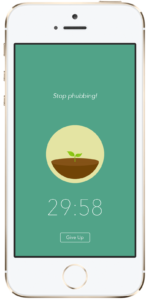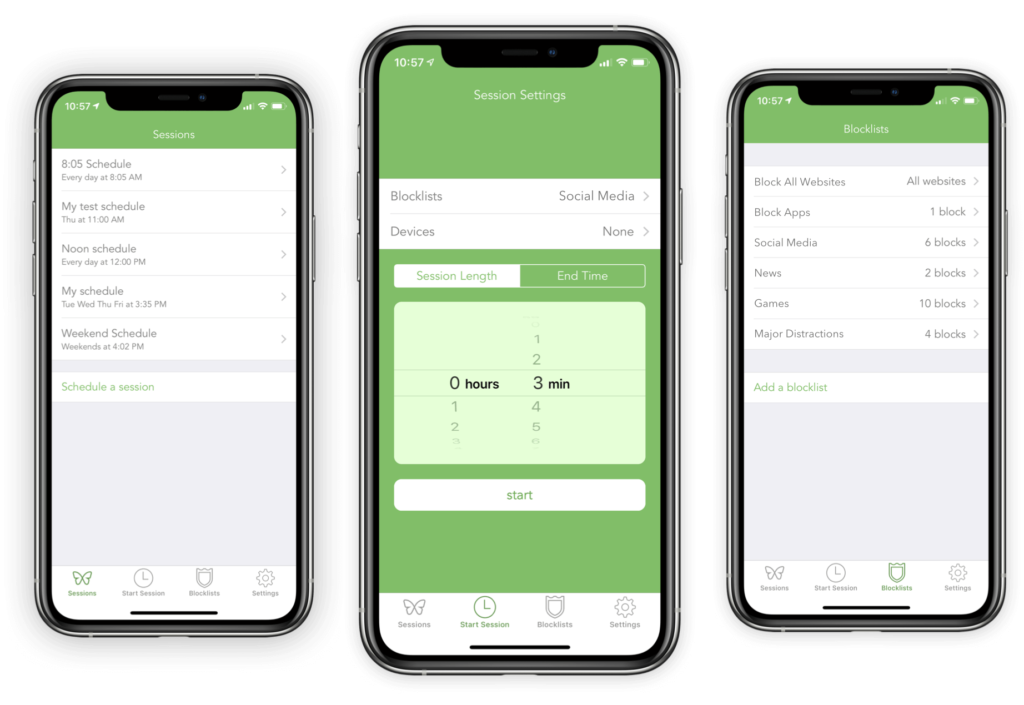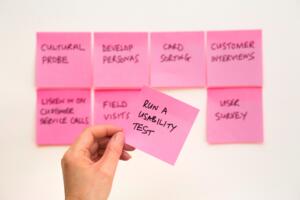How to Make Learning Simpler

Are you tired of burning the midnight oil, drowning in a sea of textbooks and coffee cups, only to get mediocre grades as a student? Do you feel like the only thing you’re effectively learning is how to procrastinate? Fear not, for I am here to help you crack the code and introduce you to the art of effective learning. And also help you balance study with fun time with buddies.
You see, there’s a common misconception that success in college requires blood, sweat, and tears (although hopefully not all at once). But let me tell you, studying harder doesn’t necessarily mean studying smarter. It’s all about working smarter, not harder. And no, that doesn’t mean just finding ways to cheat-although let’s be honest, who hasn’t at least considered it once?
Effective learning is an art. It requires strategy, discipline, and yes, a little bit of humour to keep things interesting. So sit back, and grab a snack (healthy or unhealthy, I won’t judge but I will prefer a healthy one). Let me take you into the wonderful world of studying smarter, not harder.
I. Understanding the Art of Effective Learning
Appreciating the art of effecting learning is crucial if you want to really enjoy your time in college or university. The holy grail of college success. But what exactly is it? Well, dear students, it’s not just about cramming information into your brain and hoping it sticks. That’s like throwing spaghetti at the wall and hoping it’ll magically turn into an A. (Spoiler alert: it won’t).
-
Comprehension Over Memorization
Effective learning is all about comprehension, not just memorization. Think of it this way – if you were to memorize every word in the dictionary, would you be fluent in the English language? Probably not. (Unless you’re a robot. In which case, hello, fellow robot reader, just kidding.)
-
Be Curious
So, what are some strategies for retaining information long-term? First and foremost, don’t be afraid to ask questions. You know what they say – the only dumb question is the one you don’t ask.
-
Develop the Skill of Linkage or Connection
Additionally, finding ways to connect new information to things you already know can help with retention. For example, if you’re learning about photosynthesis, you could try associating it with that one time you accidentally killed your roommate’s plant by forgetting to water it. (RIP, Phil the Philodendron.)
-
Take Breaks
And don’t forget to take breaks. Studies have shown that regular breaks can actually improve productivity. So go ahead and treat yourself to a little Netflix binge, a walk in the park, a game with friends etc. (just remember to set a timer so you don’t accidentally watch three seasons of “The Office” in one sitting).
II. Tips for Developing the Art of Effective Learning: Schedule and Stick to It, and Learn to Take Notes.
Are you looking for ways to master the art of effective learning? Whether it’s in undergraduate or graduate school, getting the most out of lectures, textbooks, and other classes can be a daunting task.
Fortunately, there are tried and true tips that can help make the process much easier. From making study plans to breaking assignments into smaller tasks to testing yourself often etc. there’s no limit to how creative one can get when it comes to putting their learning into over-drive. After all, mastering an art isn’t something you acquire overnight — so why not make the learning process easier and more practical with these clever hacks!
Below are some of the tips:
1. Creating a Study Schedule and Sticking to It
Creating a study schedule can be less daunting than expected. Fundamentally, crafting a study schedule is akin to finding the Holy Grail of effective learning. The truth is, establishing a study schedule isn’t as painful as getting a cavity filled.
-
Figure Out When You’re Most Productive.
The first step is to know yourself. Are you a morning person, or do you only come alive at night? If you have no idea about what time of the day you’re most active, then rediscover yourself and boom, you’re good to go.
-
Prioritize Your Toughest Subjects During Your Peak Productivity Hours.
When you prioritize well, you can tackle the hardest stuff when you’re feeling the most motivated. This enables you to avoid joining the community of students who always fall asleep when they are learning.
-
Reward Yourself

And here’s a pro tip: try to schedule in some “reward time” after each study session. It could be something as simple as watching a funny cat video (because let’s be honest, who doesn’t love those?) or treating yourself to a delicious snack. (Just make sure it’s not so delicious that you end up eating the entire bag and forgetting to study altogether.)
-
Be Consistent
Of course, creating a study schedule is only half the battle. The other half is actually sticking to it. And let’s face it, sometimes that can be harder than resisting the urge to buy more highlighters. But remember – consistency is key. So set yourself up for success by finding an accountability buddy (preferably someone who won’t let you off the hook too easily) or using a reward system to incentivize yourself.
With a little bit of planning, a dash of motivation, and maybe a sprinkling of glitter (because why not?), you’ll be well on your way to mastering the art of effective learning.
2. Learn to Take Notes
Taking notes can feel like a chore, but trust me, it’s worth it. Just like doing laundry. Sure, it’s annoying, but it’s better than wearing smelly socks all week. But how do you take notes that are actually helpful and not just a jumbled mess of words?
-
Write Down Every Useful Point
First of all, don’t try to write down every single thing your professor says. That’s like trying to catch every raindrop in a storm with a Dixie cup. Instead, focus on key points and main ideas. And don’t forget to leave some space in between each point. You never know when a brilliant thought or hilarious joke might pop into your head.
-
Be Creative with Your Notes
Secondly, don’t be afraid to get creative with your note-taking. Maybe you like to draw pictures to help illustrate concepts. Example: like a stick figure of Newton getting hit on the head with an apple. Or maybe you like to use different colours for different ideas (because who says notes can’t be pretty?). Whatever works for you, go for it.
-
Use a Note-Taking App (that’s if you’re using a computer or tablet)
And here’s a pro tip: if you’re taking notes on a computer or tablet, try using a note-taking app that lets you easily organize your notes by subject and add tags. It’ll make studying for exams a whole lot easier.
-
Study Your Notes
Undoubtedly, taking effective notes is one step up. The major task is actually how you use the notes. The bad news is that no one can learn for you. So make sure to review your notes regularly and try to connect them to other concepts you’re learning. And if you’re feeling really adventurous, try explaining the concepts to a friend or family member. Well, you can also explain it to your dog, that’s if they’re a good listener, interesting, right? It’s a great way to solidify your understanding and practice your communication skills.
So there you have it, buddies – taking effective notes doesn’t have to be a snooze-fest.
III. Tips for Improving the Art of Effective Learning: Active Reading Techniques
Reading textbooks can be about as exciting as watching paint dry. Unless you’re really into the paint. In which case, more power to you. But with the right techniques, you can turn passive reading into active learning.
Here’s how:
-
Skimming
Skimming is like speed dating for textbooks. You’re not looking for a deep, meaningful connection (let’s be real, you’re probably not going to marry your textbook). You’re just trying to get a sense of what it’s about. So take a quick glance at the headings, subheadings, and bolded words to get an idea of the main topics.
-
Scanning
Scanning is like playing “Where’s Waldo?” with your textbook. You’re looking for a specific piece of information (like a date or a name), and you don’t want to waste time reading everything else. So scan the text for keywords and phrases that relate to what you’re looking for.
-
Active Reading
Active reading is like having a conversation with your textbook. You’re not just passively absorbing information, you’re engaging with it. So ask yourself questions as you read, like “What’s the main idea here?” or “How does this relate to what I already know?” And take notes or underline key points as you go.
-
Summarizing
Summarizing is like giving your textbook a makeover. You’re taking all the information and putting it into a more concise, organized format. So try summarizing each chapter or section in your own words. It’ll help you remember the information better and make studying for exams a lot easier.
-
Connecting
Connecting is like playing Six Degrees of Kevin Bacon with your textbook. You’re trying to find connections between different concepts or ideas. So as you read, think about how the information relates to other things you’ve learned in class or in real life.
Definitely, these techniques aren’t one-size-fits-all. You’ll need to experiment with different approaches to find what works best for you. And no, “not reading at all” is not a valid option. Nice try, though. But with a little bit of practice, you’ll be reading your textbooks like a pro in no time.
IV. Tips for Nurturing the Art of Effective Learning: Using Mnemonic Devices to Aid Memory Retention
Have you ever tried to memorize a list of random facts or dates, only to forget them as soon as you turned the page? Or worse, forget them during an exam and end up writing out of context. Fear not- there’s a solution: mnemonic devices.
Mnemonic devices are like cheat codes for your brain. They’re memory aids that help you remember information by associating it with something else (usually something silly or absurd). Here are a few examples:
-
Acronyms
Acronyms are like shorthand for information. You take the first letter of each word in a list and make a new word out of them. For example, to remember the order of the planets Mercury, Venus, Earth, Mars, Jupiter, Saturn, Uranus, and Neptune, you could use the acronym “My Very Eager Mother Just Served Us Nine Pizzas.” Or “My Very Evil Mother Just Served Us Nachos,” if you’re not a fan of pizza.
-
Rhymes
Rhymes are like musical hooks for your memory. You take a piece of information and put it into a catchy rhyme or song. For example, to remember the number of days in each month, you could use the rhyme “Thirty days hath September, April, June, and November; all the rest have thirty-one, except February, with twenty-eight days clear, and twenty-nine each leap year.”
-
Visuals
Visuals are like mental post-it notes. You create a mental image that helps you remember information. For example, to remember the difference between stalactites (hanging from the ceiling) and stalagmites (growing from the ground), you could imagine that stalactites “hold tight” to the ceiling, while stalagmites “might” poke you in the foot if you’re not careful.
But here’s the thing: silly is memorable. The more absurd the mnemonic device, the more likely you are to remember it. So don’t be afraid to get creative and come up with your own wacky memory aids. Just maybe don’t share them with your professor. They might think you’re losing it.
Remember, mnemonic devices are a powerful tool for aiding memory retention. So the next time you need to memorize a list of facts or figures, try using an acronym, a rhyme, or a visual. Your brain and your grades will thank you.
V. Tips for Enhancing the Art of Effective Learning: Utilizing Visual Aids and Diagrams
Do you ever feel like you’re drowning in a sea of text? If you’re a visual learner, reading pages upon pages of text can be a real nightmare. Fortunately, there’s a way out, that’s where visual aids and diagrams come in.
Visual aids and diagrams are like a lifeline for your brain. They provide a break from the monotony of text and help you see information in a new light. Here are a few examples:
-
Mind Maps
Mind maps are like a roadmap for your brain. They help you organize information by putting it into a visual format. For example, if you were trying to study for a history exam, you could create a mind map of all the key events, dates, and people related to the topic. You could then connect them with lines and arrows to show how they’re related.
-
Infographics
Infographics are like a colourful crash course in information. They take complex data and present it in a visually appealing way. For example, if you were trying to understand the causes and effects of climate change, you could look up an infographic that breaks down the information into easy-to-digest chunks with graphs, charts, and illustrations.
-
Diagrams
Diagrams are like visual instruction manuals. They show you how something works or how different parts fit together. For example, if you were studying biology and needed to understand the structure of a cell, you could look up a diagram that labels all the different parts and explains how they function.
Here’s the thing, you don’t have to be an artist to utilize visual aids and diagrams. There are plenty of resources online that offer pre-made diagrams, infographics, and mind maps that you can use to supplement your learning.
In brief, visual aids and diagrams are powerful tools for helping visual learners understand complex information. So the next time you’re feeling overwhelmed by text, try using a mind map, infographic, or diagram to help break it down. Your brain and your eyes will thank you.
VI. Tips for Refining the Art of Effective Learning: Eliminating Distractions
Sadly, distractions are the bane of every student’s existence. Whether it’s your noisy roommate, your buzzing phone, your floor mates, campus activities or that new show you just can’t stop binge-watching. Distractions can seriously impede your ability to learn. Here, I take you through some practical ways to eliminate distractions and get back on the path to success in your academic journey.
-
Find a Quiet Place to Study

This could be a library, your room, a quiet corner of a coffee shop, or even a park bench. This may seem obvious, but finding a quiet place to study can make all the difference. Just make sure it’s a place where you can focus without any interruptions.
-
Turn Off Your Phone
I know, I know – this is easier said than done. But trust me, your phone is a major distraction. Turn it off, put it on silence, or even leave it in another room. If you need to use it for research purposes, consider using the “do not disturb” mode or turning off notifications.
-
Use Productivity Apps
There are a ton of productivity apps out there that can help eliminate distractions. For example, some apps can block certain websites or apps during designated study times. Others can help you stay on task by setting reminders and timers.
Examples:
Forest – Forest is a popular app that encourages you to stay focused by growing a virtual tree. During designated study times, you can set the app to block certain websites or apps that may distract you. If you leave the app, your virtual tree will wither, providing an incentive to stay focused.

Freedom – Freedom is a website and app blocker that allows you to create custom blocklists for specific websites or apps during designated study times. You can schedule blocking sessions in advance and set up recurring sessions to help you stay on track with your study goals.

Cold Turkey – Cold Turkey is a powerful website and app blocker that lets you block websites, apps, or even entire categories of apps during designated study times. It has a wide range of features, including scheduling, time limits, and the ability to block specific content or keywords.
-
Take Breaks
Wait, what? Taking breaks to eliminate distractions? Yes, you read that right. Sometimes, taking short breaks can actually help you stay focused. For example, if you’re working on a long essay, take a 10-minute break every hour to stretch, walk around, or even grab a snack. This can help you stay energized and focused when you return to your work.
It is worth mentioning that eliminating distractions isn’t about being perfect. It’s about being mindful of what’s getting in the way of your learning and taking steps to minimize those distractions.
You may like:
A hack for writing a great research proposal
Study Abroad: a Comprehensive Guide
Step-by-step guide for writing cold emails to professors
VII. Tips for Perfecting the Art of Effective Learning: Minimizing Distractions
Let’s face it – distractions are everywhere. With social media notifications pinging every few minutes, your floormate blasting music in the next room, and your dog begging for attention, it can be hard to stay focused on your studies.
-
Turn Off Notifications
The first step to minimizing distractions is to turn off those pesky notifications. When you’re trying to study, the last thing you need is to be bombarded with Instagram likes, text messages, and email alerts. So, turn off notifications on your phone and computer. Trust me, the world won’t end if you don’t see that notification right away.
-
Find a Quiet Study Space

It’s hard to focus when there’s chaos around you. Find a quiet place to study – this could be a library, a coffee shop, or even a secluded corner of your house or room. If you’re at home and have noisy roommates, invest in a good pair of noise-cancelling headphones. You’ll be amazed at how much more productive you can be when you’re in a quiet space.
-
Create a Schedule
When you have a lot on your plate, it is easy to get overwhelmed and distracted. Creating a schedule can thus help you prioritize your tasks and stay on track. Use a planner or a scheduling app to map out your day and include specific study times. This will help you stay accountable and focused.
-
Take Breaks
It is important to take breaks when you’re studying. But, be mindful of how you’re spending those breaks. If you’re taking a 5-minute break to check your phone, you’re not really giving your brain a chance to rest. Instead, take a short walk, do some stretches, or meditate. These activities will help you recharge and come back to your studies more focused and refreshed.
-
Remove Temptations
Do you find yourself mindlessly scrolling through social media when you’re supposed to be studying? Remove the temptation altogether by deleting those apps from your phone or using website blockers on your computer. You’ll be amazed at how much more focused you can be when those distractions aren’t even an option.
So the next time you find yourself getting distracted, take a deep breath and try implementing some of these tips.
VIII. Tips for Effective Learning: Prioritizing Self-Care
When it comes to learning effectively, taking care of yourself should be at the top of your to-do list. After all, how can you be expected to absorb information and perform your best if you’re running on fumes? So, let’s talk about some practical day-to-day examples of prioritizing self-care.
-
Get Enough Sleep

It’s tempting to stay up all night cramming for an exam or writing a paper. But, the truth is, getting enough sleep is crucial for effective learning. Your brain needs time to rest and recharge. So, aim for 7-9 hours of sleep per night. Not only will you feel more alert and focused, but your mood and overall health will improve too.
-
Eat Well
Eating a balanced and nutritious diet can also have a big impact on your learning. Make sure you’re getting enough protein, fruits and veggies, and whole grains. And, don’t forget to stay hydrated. Aim for 8 glasses of water per day. Snack on healthy foods like nuts, fruit, and yoghurt to keep your energy levels up throughout the day.
-
Exercise
Regular exercise is not only good for your physical health, but it can also improve your mental health and learning ability. So, make time for exercise in your schedule. It doesn’t have to be a 2-hour gym session – even a 20-minute walk or yoga session can make a big difference. Bonus points if you can get outside and soak up some vitamin D.
-
Take Breaks
We’ve talked about this before, but it’s worth repeating – taking breaks is important. Don’t feel guilty about taking some time for yourself. Whether it’s reading a book, taking a bath, or hanging out with friends, make sure you’re giving yourself some downtime. You’ll come back to your studies feeling refreshed and ready to go.
-
Practice Self-Compassion
Learning is hard work, and it’s easy to get down on yourself if you don’t get the grades you were hoping for or if you’re struggling with a particular subject. But, it’s important to practice self-compassion. Be kind to yourself. Remember that everyone makes mistakes and has their own unique learning journey. Treat yourself like you would treat a friend who was going through a tough time.
Prioritizing self-care is non-negotiable if you want to develop the art of effective learning. By getting enough sleep, eating well, exercising, taking breaks, and practising self-compassion, you can set yourself up for success.
-
Ask for Help
Again, don’t be afraid to ask for help when you need it. Whether it’s talking to a friend, reaching out to a therapist, or seeking academic support, there’s no shame in asking for assistance. Prioritizing self-care also means prioritizing your needs, and sometimes that means asking for help.
Some useful Havard University resources on effective learning
IX. Why Taking Care of Yourself is Key to Studying Success
Studying is tough, and it’s easy to get caught up in the never-ending cycle of reading, writing, and stressing. But, the truth is, taking care of yourself is just as important as hitting the books. In fact, it might even be more important. Let’s dive into some practical day-to-day examples of why self-care is key to studying success.
-
Improved Focus
When you are taking care of yourself, you’re able to focus better. When you’re well-rested and well-fed, your brain has the energy it needs to absorb information and make connections. So, taking care of yourself is actually an investment in your studying success.
-
Reduced Stress
We all know that studying can be stressful. But, when you prioritize self-care, you’re able to reduce that stress. Taking breaks, practising mindfulness, and engaging in self-compassion can all help to ease the anxiety that comes with studying.
-
Better Grades
It might seem counterintuitive, but taking care of yourself can actually improve your grades. When you’re able to focus better and reduce stress, you’re more likely to retain information and perform well on exams.
-
Increased Motivation
When you’re feeling burnt out and exhausted, it is hard to stay motivated. But, when you prioritize self-care, you’re more likely to feel energized and ready to tackle your studying goals. So, taking care of yourself can actually help you stay on track and motivated.
-
Lifelong Learning
Taking good care of yourself facilitates the art of effective learning, which sets you up for lifelong learning. By building good habits and strategies now, you’re better able to tackle new challenges and continue growing and developing throughout your life. This means staying curious, staying engaged, and staying open to new opportunities.
-
Improved Overall Health
Finally, taking care of yourself is important for your overall health and well-being. When you’re well-rested, well-fed, and engaged in self-care practices, you’re more likely to feel good both physically and mentally. And, when you feel good, you’re able to perform at your best.
So, what does self-care look like during the studying process? It might mean taking a break to go for a walk or get some fresh air. It might mean treating yourself to a healthy snack or taking a nap when you need it. It might mean practising meditation or yoga to reduce stress. Whatever it looks like for you, remember that taking care of yourself is essential to your studying success.
X. Tips for Prioritizing Self-Care During the Studying Process to
Studying can be exhausting, and it’s easy to neglect self-care in favour of hitting the books. But, as we mentioned earlier, taking care of yourself is key to studying success. It is worth noting that developing the art of effective learning comes with a lot of responsibilities. So, let’s talk about some practical day-to-day examples of how to prioritize self-care during the studying process.
-
Get Enough Sleep
This might seem like a no-brainer, but getting enough sleep is essential for both physical and mental health. Try to aim for 7-9 hours of sleep each night, and make sure to establish a bedtime routine that works for you. For example, you could try reading a book, practising meditation, or listening to relaxing music before bed to help you wind down.
-
Exercise Regularly
Exercise is a great way to reduce stress, improve focus, and boost overall health. But, it can be tough to fit in a workout during the busy studying process. Try to incorporate physical activity into your day-to-day routine in small ways, like taking a walk during a study break or doing a quick yoga session before bed. Even 10-15 minutes of movement can make a big difference.
-
Eat Nutritious Foods
Eating a balanced diet is important for both physical and mental health. Try to incorporate nutrient-dense foods into your meals and snacks, like fruits, vegetables, whole grains, and lean proteins. And, don’t forget to stay hydrated by drinking plenty of water throughout the day.
-
Take Breaks
It’s important to take breaks throughout the day to give your brain a rest and recharge. But, not all breaks are created equal. Instead of scrolling through social media or binge-watching TV, try to engage in self-care activities during your breaks. This could mean taking a walk, practising mindfulness, or doing a hobby you enjoy.
XI. Finding Your Own Path: Encouragement to Try out Different Strategies
Now that we’ve covered a variety of strategies for effective learning, it’s time to talk about something equally important: finding what works for you. After all, everyone’s brain works a little differently, and what works for one person might not work for another. So, don’t be afraid to experiment with different techniques until you find what clicks. Here are some practical examples to get you started:
-
Mix it Up
If you’ve been struggling with a particular study method, mix it up. Try something new, like using flashcards or drawing diagrams to help you remember concepts. You never know what might work until you try.
-
Embrace Technology
In this modern era technology has proven to be a great tool for effective learning – but not all tools are created equal. Experiment with different apps, like flashcard creators or note-taking tools, until you find one that suits your needs.
-
Collaborate with Peers

Learning is a social activity, so don’t be afraid to collaborate with your peers. Form a study group or join an online forum to discuss coursework and share tips and tricks.
-
Focus on Your Strengths
Everyone has different strengths and weaknesses when it comes to learning. For example, some people are visual learners, while others learn best through discussion. Identify your strengths and use them to your advantage – you’ll be more likely to stick with a technique that comes naturally to you.
-
Be Open-Minded
Finally, be open-minded. Learning is a journey, and you never know what might surprise you along the way. If you’re struggling to find a technique that works, don’t be afraid to step outside of your comfort zone and try something completely different.
Remember, there’s no one-size-fits-all solution when it comes to effective learning. It’s up to you to find what works best for your individual needs and learning style. So, don’t be afraid to experiment, embrace your strengths, and stay curious. Who knows? You might just discover a new way of learning that changes the game for you.











